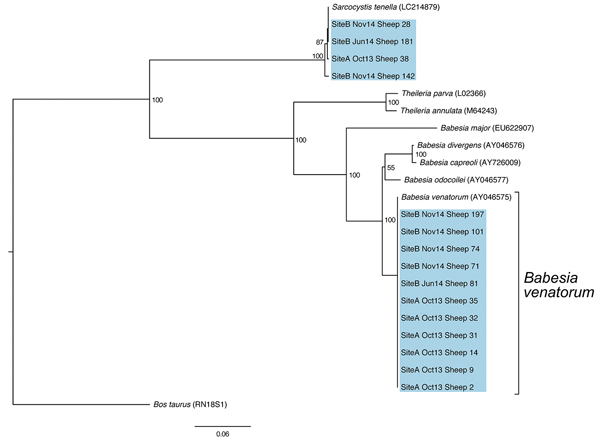Volume 25, Number 12—December 2019
Dispatch
Sheep as Host Species for Zoonotic Babesia venatorum, United Kingdom
Figure 2

Figure 2. A neighbor-joining tree of 18S small subunit rRNA amplicon sequences obtained from sheep at sites A and B in northeastern Scotland, UK. Blue shading indicates sequences obtained in this study. Previously published Babesia and Theileria sequences include B. venatorum (GenBank accession no. AY046575), B. divergens (AY046576), B. capreoli (AY726009), B. odocoilei (AY046577), B. major (EU622907), Theileria parva (L02366), and T. annulata (M64243). In addition, a Sarcocystis tenella (LC214879) isolate was included because of the presence of a similar parasite identified in the sheep population. A Bos taurus 18S small subunit rRNA sequence (RN18S1) was used to root the tree.
Page created: November 18, 2019
Page updated: November 18, 2019
Page reviewed: November 18, 2019
The conclusions, findings, and opinions expressed by authors contributing to this journal do not necessarily reflect the official position of the U.S. Department of Health and Human Services, the Public Health Service, the Centers for Disease Control and Prevention, or the authors' affiliated institutions. Use of trade names is for identification only and does not imply endorsement by any of the groups named above.